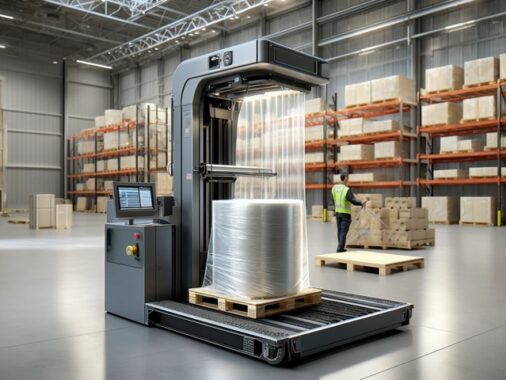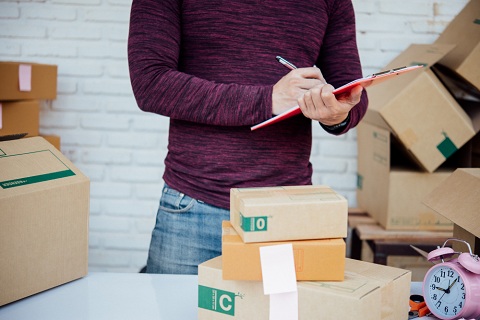In today’s increasingly eco-conscious world, businesses are recognizing the importance of sustainable practices in every aspect of their operations. From production to transportation, and finally to the consumers, sustainability has become a guiding principle. One integral component of this eco-friendly journey is adopting sustainable packaging solutions that not only minimize environmental impact but also relate closely to eco-friendly ways to transport goods. In this comprehensive guide, we will delve into the world of eco-friendly packaging and how it is intrinsically connected to promoting eco-friendly transportation methods.
Eco-Friendly Packaging: A Sustainable Revolution
Eco-friendly packaging has emerged as a pivotal player in the quest for a greener and safer environment. Unlike conventional packaging materials that often contribute to environmental degradation, eco-friendly packaging solutions prioritize sustainability from the get-go. These materials are designed to reduce waste, minimize pollution, and decrease the carbon footprint associated with the packaging industry.
One of the most significant aspects of eco-friendly packaging is its choice of materials. It encompasses a range of options such as recyclable materials, biodegradable plastics, and packaging made from renewable resources. These materials are not only kinder to the environment, but they also resonate with eco-conscious consumers who prefer products with minimal environmental impact.
Eco-Friendly Packaging and Eco-Friendly Transportation
Now, let’s bridge the connection between eco-friendly packaging solutions and eco-friendly transportation methods. At first glance, they might seem like distinct entities, but in reality, they are deeply intertwined, working in harmony to create a safer and more sustainable environment.
- Reducing Weight and Volume: Eco-friendly packaging solutions often focus on reducing excess material, resulting in lighter and more compact packaging. This directly impacts transportation by reducing the overall weight of shipments and the volume of space required for storage. When goods are packaged efficiently, it allows for more products to be transported in a single shipment, thereby decreasing the number of trips needed to move the same quantity of goods.
- Minimizing Waste: Eco-friendly packaging practices contribute to waste reduction throughout the supply chain. With less packaging material used and a higher focus on recyclable or biodegradable options, the amount of waste generated during transportation decreases significantly. Fewer disposal requirements mean fewer environmental burdens.
- Optimizing Transportation Methods: Eco-friendly packaging encourages businesses to consider more eco-conscious transportation methods. Lighter and compact packaging allows for the use of smaller, more fuel-efficient vehicles. Moreover, a reduction in weight translates to lower fuel consumption and, consequently, fewer emissions.
- Sustainability Perception: Sustainable packaging is often appreciated by consumers who are increasingly aware of their environmental footprint. When businesses adopt eco-friendly packaging solutions, they send a message that they are committed to sustainability. This perception can extend to the choice of transportation methods, influencing businesses to opt for greener alternatives.
- Recycling and Circular Economy: Eco-friendly packaging materials are usually designed with recycling in mind. This aligns perfectly with eco-friendly transportation’s goal of promoting a circular economy, where materials are reused and recycled, reducing the need for raw materials and minimizing waste.
Eco-friendly transportation methods have gained importance in reducing carbon emissions and promoting sustainability in logistics. Here are some eco-friendly ways to transport goods:
- Rail Transport: Trains are one of the most energy-efficient means of transporting goods over long distances. They produce fewer emissions per ton-mile compared to trucks and are a sustainable option for bulk transportation.
- Shipping: Cargo ships, particularly those using cleaner fuels and advanced technologies, can move large quantities of goods with relatively lower emissions compared to other modes of transport. Slow-steaming techniques further reduce fuel consumption.
- Inland Waterways: Transporting goods via rivers and canals can be highly efficient and eco-friendly. Barges and boats can carry heavy loads and produce fewer emissions than trucks.
- Electric Vehicles (EVs): The adoption of electric trucks and vans for short-distance deliveries is growing. EVs produce zero tailpipe emissions, making them a cleaner option for urban logistics.
- Hybrid Vehicles: Hybrid trucks and delivery vans combine internal combustion engines with electric components to reduce fuel consumption and emissions.
- Bicycles and E-Bikes: For last-mile delivery in urban areas, bicycles and electric bicycles (e-bikes) are eco-friendly options that reduce congestion and emissions.

Examples of Eco-Friendly Packaging Solutions
Now that we’ve explored how eco-friendly packaging and transportation are connected, let’s take a closer look at some eco-friendly packaging solutions and how they contribute to a safer and more sustainable environment:
- Recyclable Cardboard: Cardboard packaging is a classic example of eco-friendly packaging. It is recyclable and biodegradable, making it an environmentally responsible choice. Plus, it’s sturdy and can protect goods during transportation.
- Biodegradable Plastics: These plastics break down naturally over time, reducing the environmental impact. They are often used for items that require a degree of moisture resistance, such as food products.
- Reusable Packaging: Some companies are adopting reusable packaging models. Customers receive their products in durable, reusable containers, and once they’re done, they return the packaging to be refilled or repurposed.
- Minimalist Packaging: This trend involves using the bare minimum of packaging required to protect a product, reducing waste and material use. It’s especially prevalent in the cosmetics and electronics industries.
- Plant-Based Packaging: Packaging made from plant-based materials like cornstarch or sugarcane is gaining popularity. These materials are renewable and biodegradable, offering an eco-friendly alternative.






